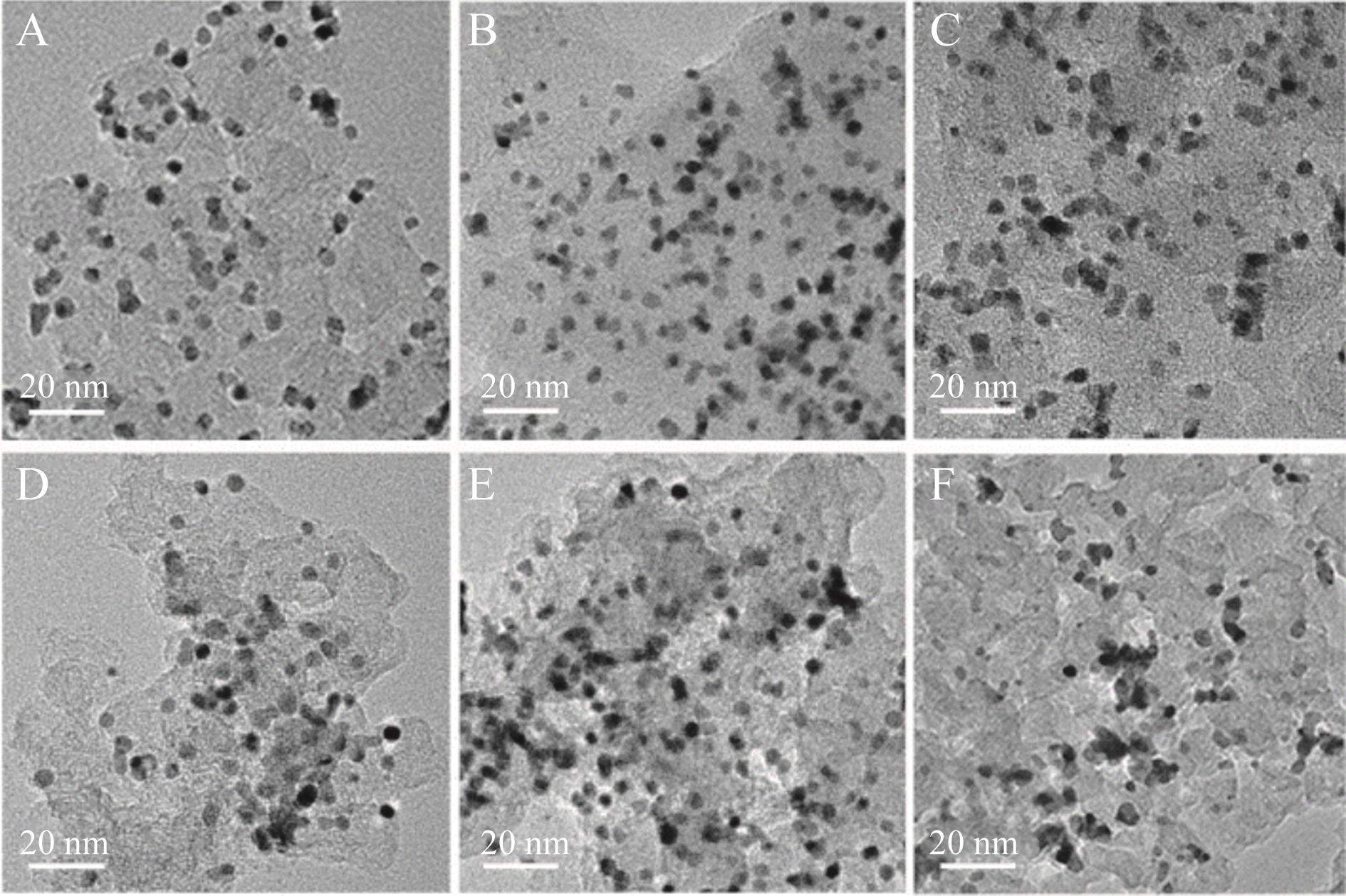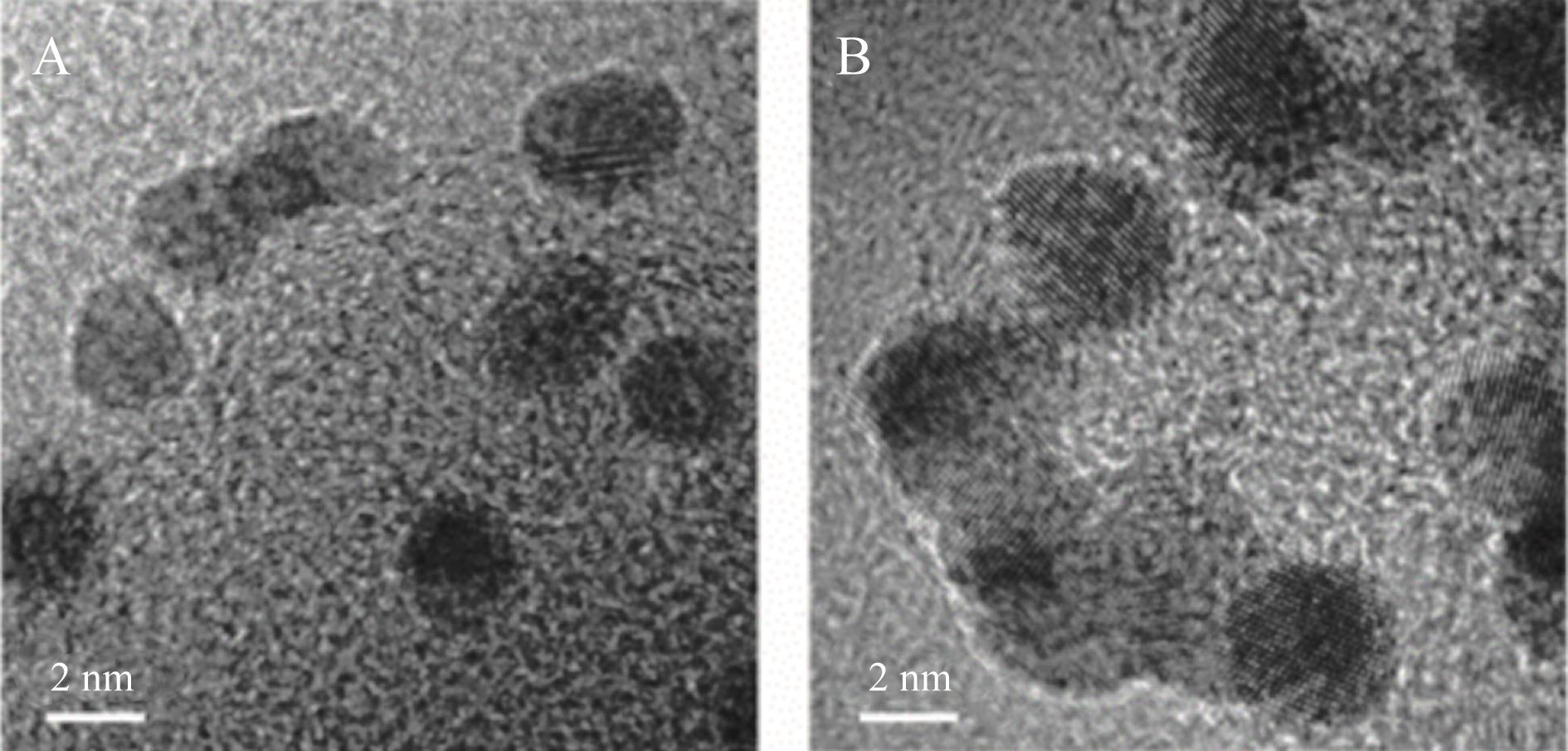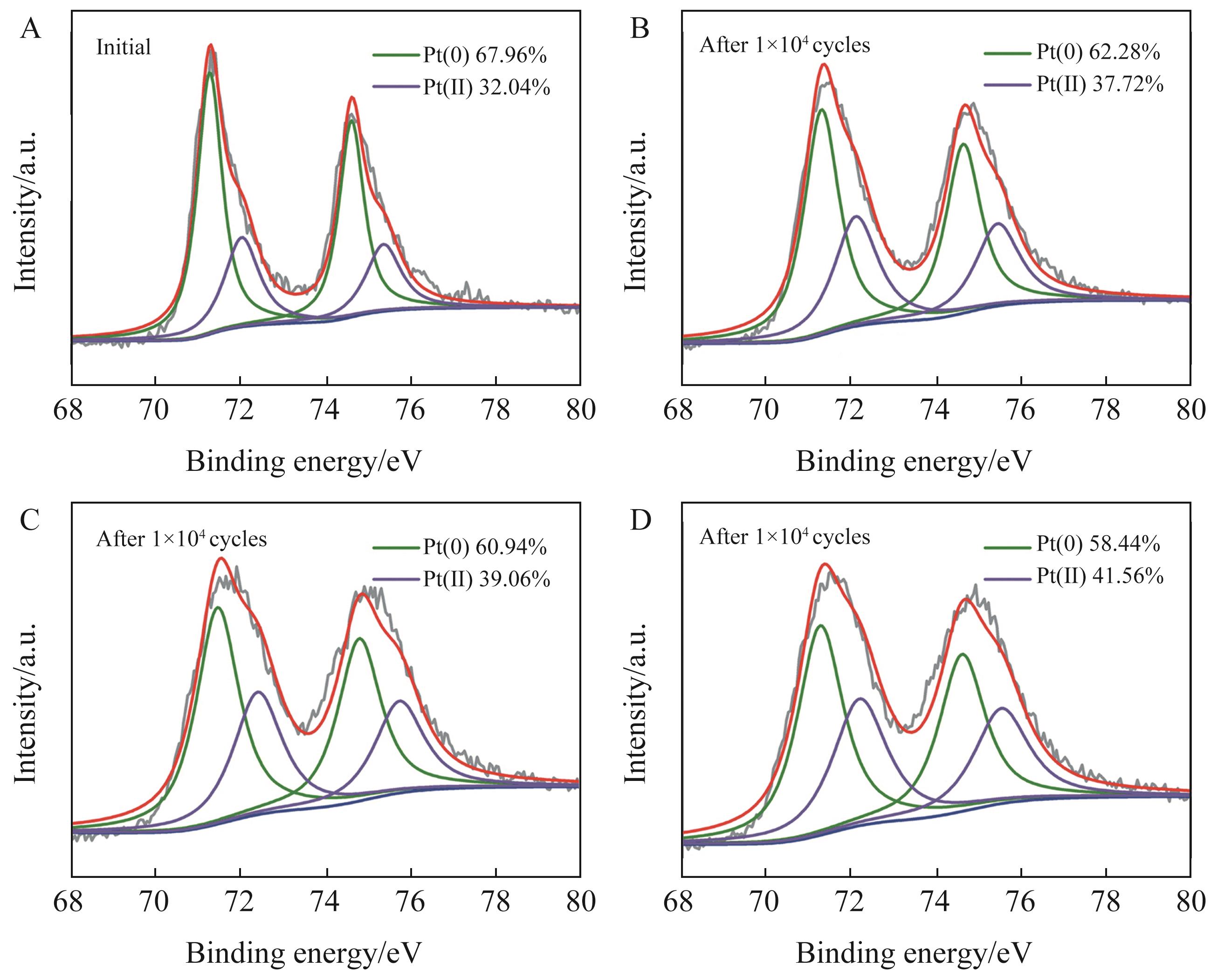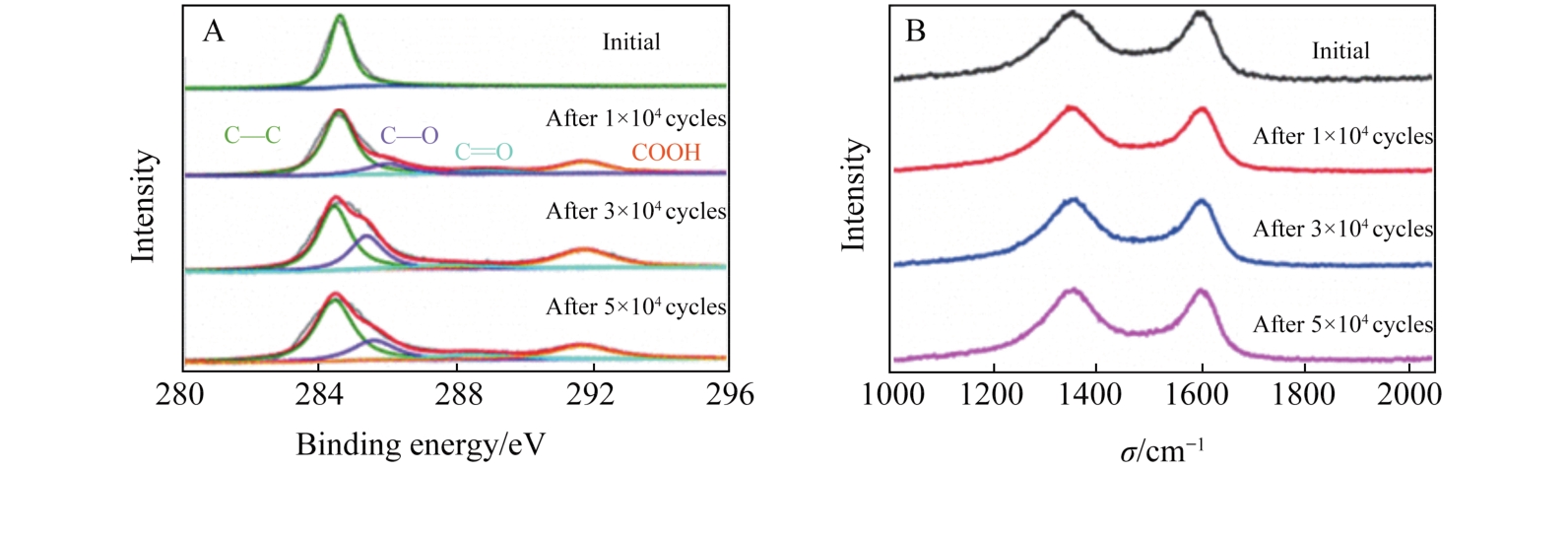
Chinese Journal of Applied Chemistry ›› 2022, Vol. 39 ›› Issue (10): 1564-1571.DOI: 10.19894/j.issn.1000-0518.210574
• Full Papers • Previous Articles Next Articles
Research on Performance Decay Mechanism of Pt/C Catalyst in Long‑Term ORR Test
He LI1,2, Gong LI1,2, Xue GONG1, Ming-Bo RUAN1, Ce HAN1, Ping SONG1( ), Wei-Lin XU1,2(
), Wei-Lin XU1,2( )
)
- 1.State Key Laboratory of Electroanalytical Chemistry and Jilin Province Key Laboratory of Low Carbon Chemical Power,Changchun Institute of Applied Chemistry,Chinese Academy of Sciences,Changchun 130022,China
2.University of Science and Technology of China,Hefei 230026,China
-
Received:2021-12-21Accepted:2022-02-23Published:2022-10-01Online:2022-10-05 -
Contact:Ping SONG,Wei-Lin XU -
About author:weilinxu@ciac.ac.cn
songping@ciac.ac.cn;
-
Supported by:the National Key R&D Program of China(2018YFB1502302);the National Natural Science Foundation of China(22072145)
CLC Number:
Cite this article
He LI, Gong LI, Xue GONG, Ming-Bo RUAN, Ce HAN, Ping SONG, Wei-Lin XU. Research on Performance Decay Mechanism of Pt/C Catalyst in Long‑Term ORR Test[J]. Chinese Journal of Applied Chemistry, 2022, 39(10): 1564-1571.
share this article
Add to citation manager EndNote|Ris|BibTeX
URL: http://yyhx.ciac.jl.cn/EN/10.19894/j.issn.1000-0518.210574

Fig.2 (A) CV curves under O2 before and after aging; (B) LSV curve after different CV cycles; (C) The relationship between the half-wave potential and the number of CV cycles; (D) The relationship between the limiting current density and the number of CV cycles
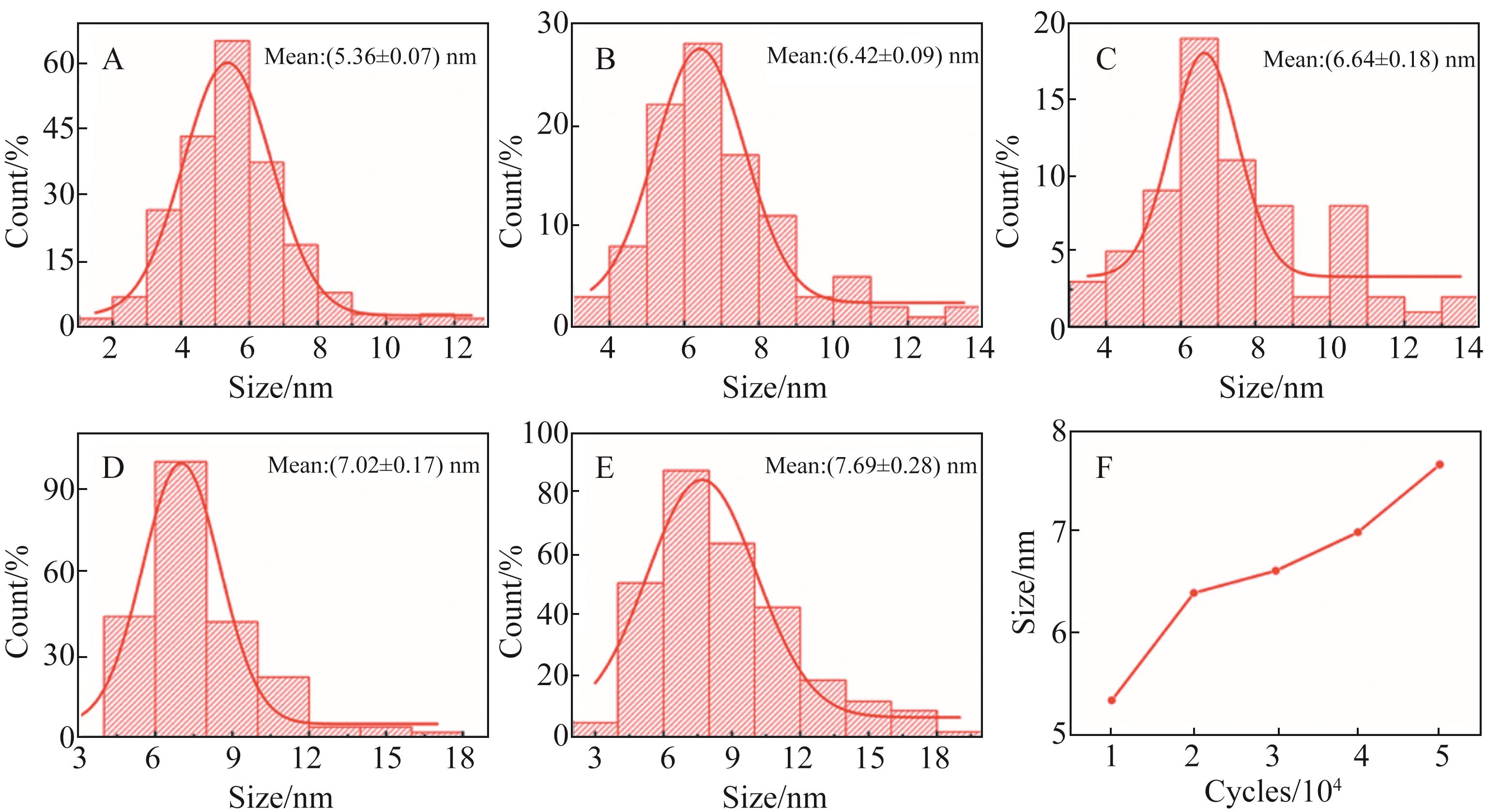
Fig.4 Pt/C Pt nanoparticle size distribution diagram after 1×104 cycles (A), 2×104 cycles (B), 3×104 cycles (C), 4×104 cycles (D) and 5×104 cycles (E); (F) The relationship between the number of cycles and the size distribution of Pt nanoparticles
| 1 | BAXTER J, BIAN Z X, CHEN G, et al. Nanoscale design to enable the revolution in renewable energy[J]. Energy Environ Sci, 2009, 2(6): 559-588. |
| 2 | DU S F, POLLEE B G. Catalyst loading for Pt-nanowire thin film electrodes in PEFCs[J]. Int J Hydrog Energy, 2012, 37(23): 17892-17898. |
| 3 | DAUD W R W, ROSLI R E, MAJLAN E H, et al. PEM fuel cell system control: a review[J]. Renew Energy, 2017, 113: 620-638. |
| 4 | KIRUBAKARAN A, JAIN S, NEMA R K. A review on fuel cell technologies and power electronic interface[J]. Renew Sustain Energy Rev, 2009, 13(9): 2430-2440. |
| 5 | ZHANG S S, YUAN X Z, WANG H J, et al. A review of accelerated stress tests of MEA durability in PEM fuel cells[J]. Int J Hydrog Energy, 2009, 34(1): 388-404. |
| 6 | SCHMITTINGER W, VAHIDI A. A review of the main parameters influencing long-term performance and durability of PEM fuel cells[J]. J Power Sources, 2008, 180(1): 1-14. |
| 7 | BI W, FULLER T F. Temperature effects on PEM fuel cells Pt/C catalyst degradation[J]. J Electrochem Soc, 2008, 155(2): B215-B221. |
| 8 | YOUSFI-STEINER N, MOCOTEGUY P, CANDUSSO D, et al. A review on PEM voltage degradation associated with water management: impacts, influent factors and characterization [J]. J Power Sources, 2008, 183(1): 260-274. |
| 9 | TANIGUCHI A, AKITA T, YASUDA K, et al. Analysis of electrocatalyst degradation in PEMFC caused by cell reversal during fuel starvation [J]. J Power Sources, 2004, 130(1/2): 42-49. |
| 10 | MITTAL V O, KUNZ H R, FENTON J M. Is H2O2 involved in the membrane degradation mechanism in PEMFC?[J]. Electrochem Solid State Lett, 2006, 9(6): A299-A302. |
| 11 | JUNG S M, YUN S W, KIM J H, et al. Selective electrocatalysis imparted by metal-insulator transition for durability enhancement of automotive fuel cells[J]. Nat Catal, 2020, 3(8): 639-648. |
| 12 | CHIU W C, HOU S S, CHEN C Y, et al. Hydrogen-rich gas with low-level CO produced with autothermal methanol reforming providing a real-time supply used to drive a kW-scale PEMFC system[J]. Energy, 2022, 239: 122267. |
| 13 | CHU T K, XIE M, YU Y, et al. Experimental study of the influence of dynamic load cycle and operating parameters on the durability of PEMFC[J]. Energy, 2022, 239: 122356. |
| 14 | CHENG X, SHI Z, GLASS N, et al. A review of PEM hydrogen fuel cell contamination: impacts, mechanisms, and mitigation[J]. J Power Sources, 2007, 165(2): 739-756. |
| 15 | KIANI M, TIAN X Q, ZHANG W X. Single atom based electrocatalysts for oxygen reduction reaction in polymer electrolyte membrane fuel cell: recent advances, challenges and future perspectives[J]. J Phys Chem Solids, 2021, 153: 109989. |
| 16 | SOLEYMANI A P, PARENT L R, JANKOVIC J. Challenges and opportunities in understanding proton exchange membrane fuel cell materials degradation using in-situ electrochemical liquid cell transmission electron microscopy[J]. Adv Funct Mater, 2021, 23: 2105188. |
| 17 | QIAO Z, WANG C Y, ZENG Y C, et al. Advanced nanocarbons for enhanced performance and durability of platinum catalysts in proton exchange membrane fuel cells [J]. Small, 2021, 17(48): 2006805. |
| 18 | DARLING R M, MEYERS J P. Mathematical model of platinum movement in PEM fuel cells[J]. J Electrochem Soc, 2005, 152(1): A242-A247. |
| 19 | GUILMINOT E, CORCELLA A, CHARLOT F, et al. Detection of Ptz+ ions and Pt nanoparticles inside the membrane of a used PEMFC[J]. J Electrochem Soc, 2007, 154(1): B96-B105. |
| 20 | WANG X P, KUMAR R, MYERS D J. Effect of voltage on platinum dissolution relevance to polymer electrolyte fuel cells[J]. Electrochem Solid State Lett, 2006, 9(5): A225-A227. |
| 21 | MEYERS J P, DARLING R M. Model of carbon corrosion in PEM fuel cells[J]. J Electrochem Soc, 2006, 153(8): A1432-A1442. |
| 22 | SHAO Y Y, YIN G P, GAO Y Z. Understanding and approaches for the durability issues of Pt-based catalysts for PEM fuel cell[J]. J Power Sources, 2007, 171(2): 558-566. |
| 23 | TANG H, QI Z G, RAMANI M, et al. PEM fuel cell cathode carbon corrosion due to the formation of air/fuel boundary at the anode[J]. J Power Sources, 2006, 158(2): 1306-1312. |
| 24 | MAASS S, FINSTERWALDER F, FRANK G, et al. Carbon support oxidation in PEM fuel cell cathodes[J]. J Power Sources, 2008, 176(2): 444-451. |
| 25 | WANG Z B, ZUO P J, WANG X P, et al. Studies of performance decay of Pt/C catalysts with working time of proton exchange membrane fuel cell [J]. J Power Sources, 2008, 184(1): 245-250. |
| 26 | PAHON E, BOUQUAIN D, HISSEL D, et al. Performance analysis of proton exchange membrane fuel cell in automotive applications[J]. J Power Sources, 2021, 510: 230385. |
| 27 | VIRKAR A V, ZHOU Y K. Mechanism of catalyst degradation in proton exchange membrane fuel cells[J]. J Electrochem Soc, 2007, 154(6): B540-B547. |
| 28 | BOGAR M, YAKOVLEV Y, SANDBECK D J S, et al. Interplay among dealloying, ostwald ripening, and coalescence in PtXNi100-X bimetallic alloys under fuel-cell-related conditions[J]. ACS Catal, 2021, 11(18): 11360-11370. |
| 29 | YU X W, YE S Y. Recent advances in activity and durability enhancement of Pt/C catalytic cathode in PEMFC-part Ⅰ. physico-chemical and electronic interaction between Pt and carbon support, and activity enhancement of Pt/C catalyst[J]. J Power Sources, 2007, 172(1): 133-144. |
| 30 | YU X W, YE S Y. Recent advances in activity and durability enhancement of Pt/C catalytic cathode in PEMFC-part Ⅱ: degradation mechanism and durability enhancement of carbon supported platinum catalyst[J]. J Power Sources, 2007, 172(1): 145-154. |
| 31 | FOWLER M W, MANN R F, AMPHLETT J C, et al. Incorporation of voltage degradation into a generalised steady state electrochemical model for a PEM fuel cell[J]. J Power Sources, 2002, 106(1/2): 274-283. |
| 32 | PIETRZAK R, NOWICKI P, WACHOWSKA H. The influence of oxidation with nitric acid on the preparation and properties of active carbon enriched in nitrogen[J]. Appl Surf Sci, 2009, 255(6): 3586-3593. |
| [1] | Ting WANG, Qi WEI, Qiang FU, Wei LI, Shi-Wei WANG. Review of Perovskite Photovoltaic Cell Encapsulation Material and Technology [J]. Chinese Journal of Applied Chemistry, 2022, 39(9): 1321-1344. |
| [2] | Chen-Si-Fan JIAO, Shao‑Bo ZHENG, Peng-Jun XU, Wei WANG, Takebe HIROMICHI, Mukai KUSUHIRO, Zhong-Da YU. Method of Evaluating the Foaming Properties of Surfactant Solutions— Real Sphere Bubble Method [J]. Chinese Journal of Applied Chemistry, 2022, 39(7): 1108-1118. |
| [3] | Xin-Wei DU, Wen-Jie ZHAO, Wei HU, Zhao-Yan SUN, Wan-Li LIU, Tian-Lei REN, Ming-Xing FU. Preparation and Properties of Poly(ether ether ketone)/Carbon Nanotube Modified Polypropylene Janus Composite Separator [J]. Chinese Journal of Applied Chemistry, 2022, 39(12): 1862-1869. |
| [4] | Dan WANG, Xian-Biao HOU, Xing-Kun WANG, Zhi-Cheng LIU, Huan-Lei WANG, Ming-Hua HUANG. Research Progress of Carbon‑Encapsulated Iron‑Based Nanoparticles Electrocatalysts for Zinc‑Air Batteries [J]. Chinese Journal of Applied Chemistry, 2022, 39(10): 1488-1500. |
| [5] | ZHAO Chang-Li, QIN Ming-Gao, DOU Xiao-Qiu, FENG Chuan-Liang. High Mechanical Stability and Osteogenesis of Chiral Supramolecular Hydrogel Induced by Inorganic Nanoparticles [J]. Chinese Journal of Applied Chemistry, 2022, 39(1): 177-187. |
| [6] | Ying ZHAO, Yi-Jia SHAO, Luo-Qian LI, Jian-Wei REN, Shi-Jun LIAO. Research Progress on the Degradation Mechanism and Cycle Stability Improvement of Lithium-Rich Cathode Materials [J]. Chinese Journal of Applied Chemistry, 2022, 39(02): 205-222. |
| [7] | QIAO Zong-Wen, CHEN Tao. Properties of Pyrenesulfonic Type Sulfonated Polysulfone Cation Exchange Membrane with High Performance Long Side Chain [J]. Chinese Journal of Applied Chemistry, 2021, 38(6): 668-674. |
| [8] | WU Zhen-Jiang, HUO Xiao-Wei, LIU Shou-Jun, YANG Song. Preparation and Application of Resin-Free Color Pastes in Water-Based Pigment Systems [J]. Chinese Journal of Applied Chemistry, 2021, 38(2): 212-219. |
| [9] | LI Gong, JIN Long-Yi, YAO Peng-Fei, LIU Cong, XU Wei-Lin. Controllability Design of High Performance Oxygen Reduction Catalysts Supported by Platinum Nanoparticles Loaded on Mesoporous Carbon [J]. Chinese Journal of Applied Chemistry, 2021, 38(12): 1639-1646. |
| [10] | CAO You-Peng, PANG Xuan, XIANG Sheng, WANG Tian-Chang, FENG Li-Dong, BIAN Xin-Chao, LI Gao, CHEN Xue-Si. Solution-Induced Co-crystallization in Poly(lactic acid)/ Substituted Poly(lactic acid) Blends [J]. Chinese Journal of Applied Chemistry, 2021, 38(1): 60-68. |
| [11] | WEI Zhenye, MENG Junling, WANG Haocong, ZHANG Wenwen, LIU Xiaojuan, MENG Jian. Improving the Electrocatalytic Activity of La2NiO4+δ Cathode by Surface Modification with Conformal Heterojunction [J]. Chinese Journal of Applied Chemistry, 2020, 37(8): 939-951. |
| [12] | QIAO Zongwen, ZHAO Benbo. Properties of Sulfonated Polysulfone Proton Exchange Membranes Based on One-Pot Method [J]. Chinese Journal of Applied Chemistry, 2020, 37(6): 658-665. |
| [13] | AN Lulu, MI Jie. Synthesis of Nickel Cobalt Hydroxide and Its Electrochemical Properties [J]. Chinese Journal of Applied Chemistry, 2020, 37(5): 579-586. |
| [14] | WEN Pushan, HE Rui, ZHAO Guanglian, LIANG Xing, LEE Myonghoon. Preparation and Properties of Soluble Polyimides as the Liquid Crystal Alignment Layer [J]. Chinese Journal of Applied Chemistry, 2020, 37(12): 0-0. |
| [15] | WEN Pushan, HE Rui, ZHAO Guanglian, LIANG Xing, LEE Myonghoon. Preparation and Properties of Soluble Polyimides as the Liquid Crystal Alignment Layer [J]. Chinese Journal of Applied Chemistry, 2020, 37(12): 1403-1410. |
| Viewed | ||||||
|
Full text |
|
|||||
|
Abstract |
|
|||||

